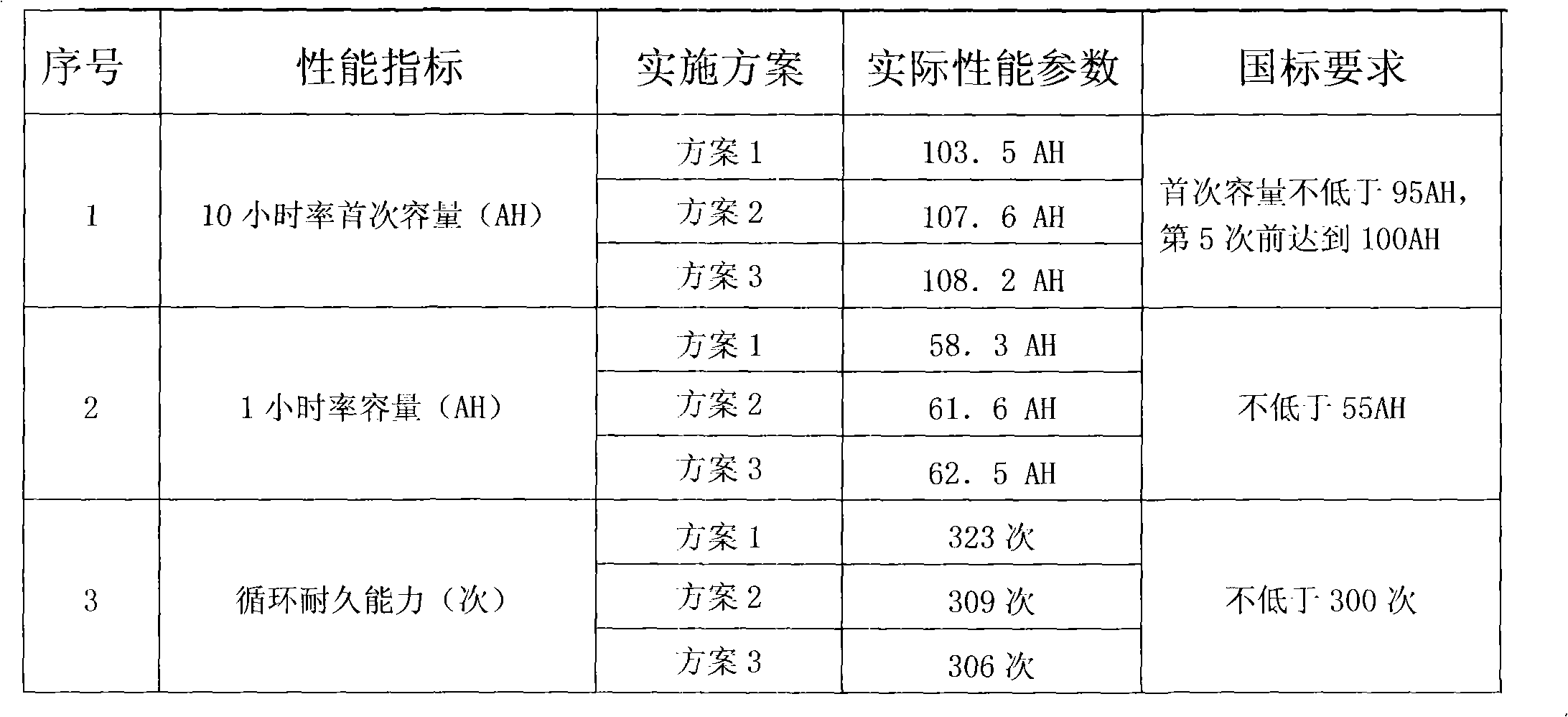Internalized charging method for standby lead-acid battery
A lead-acid battery, charging method technology, applied in the direction of secondary battery charging/discharging, secondary battery repair/maintenance, etc., to achieve the effect of high cycle life
- Summary
- Abstract
- Description
- Claims
- Application Information
AI Technical Summary
Problems solved by technology
Method used
Image
Examples
Embodiment 1
[0013] A backup lead-acid storage battery internalization charging method, comprising the following steps: the storage battery filled with acid is placed in a circulating water bath for 5 minutes, the internal temperature of the battery is reduced to below 40°C, and the charging circuit of the storage battery is connected to prepare for charging. When the battery temperature is not higher than 40°C, turn on the charger for charging, specifically:
[0014] (1) at 0.03C 10 Charge for 5 hours; (2) then charge at 0.1C 10 Charge for 33 hours; (3) then charge at 0.06C 10 Charge for 12 hours; (4) then charge at 0.1C 10 Discharge for 7 hours; (5) then use 0.1C 10 Charge for 10 hours; (6) then charge at 0.05C 10 Charge for 9 hours; then, (7) stand still for 0.5 hours; (8) charge at 0.1C 10 Discharge for 8 hours; (9) then use 0.1C 10 Charge for 9 hours; (10) then charge at 0.06C 10 Charge for 5 hours.
[0015] During the charging process, pay attention to controlling the battery...
Embodiment 2
[0017] specifically is:
[0018] (1) at 0.04C 10 Charge for 5 hours; (2) then charge at 0.15C 10 Charge for 32 hours; (3) then charge at 0.07C 10 Charge for 11 hours; (4) then charge at 0.11C 10 Discharge for 8 hours; (5) then at 0.11C 10 Charge for 11 hours; (6) then charge at 0.07C 10 Charge for 10 hours; then, (7) stand still for 0.7 hours; (8) charge at 0.11C 10 Discharge for 9 hours; (9) and then at 0.11C 10 Charge for 8 hours; (10) then charge at 0.07C 10 Charge for 5 hours.
[0019] All the other implementations are as in Example 1.
Embodiment 3
[0021] specifically is:
[0022] (1) at 0.05C 10 Charge for 5 hours; (2) then charge at 0.15C 10 Charge for 31 hours; (3) then charge at 0.08C 10 Charge for 11 hours; (4) then charge at 0.12C 10 Discharge for 8 hours; (5) then at 0.12C 10 Charge for 10 hours; (6) then charge at 0.08C 10 Charge for 10 hours; then, (7) stand still for 0.6 hours; (8) recharge at 0.12C 10 Discharge for 10 hours; (9) then at 0.12C 10 Charge for 10 hours; (10) then charge at 0.08C 10 Charge for 5 hours.
[0023] All the other implementations are as in Example 1.
[0024] The performance indicators of the formed battery are as follows (take 12V100AH as an example):
[0025]
PUM
 Login to View More
Login to View More Abstract
Description
Claims
Application Information
 Login to View More
Login to View More - R&D
- Intellectual Property
- Life Sciences
- Materials
- Tech Scout
- Unparalleled Data Quality
- Higher Quality Content
- 60% Fewer Hallucinations
Browse by: Latest US Patents, China's latest patents, Technical Efficacy Thesaurus, Application Domain, Technology Topic, Popular Technical Reports.
© 2025 PatSnap. All rights reserved.Legal|Privacy policy|Modern Slavery Act Transparency Statement|Sitemap|About US| Contact US: help@patsnap.com

